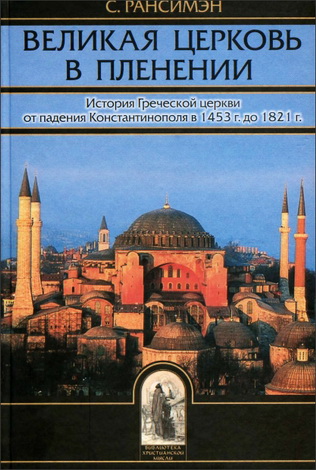
Bulley - The Priesthood of Some Believers

As its title indicates, the main aim of this thesis is to examine the evidence of the Christian literature of the first three centuries AD concerning the general priesthood of the church and the special priesthood of the ordained clergy, showing that there was a movement away from the former and towards the latter. In order to relate this evidence to the present day, it will begin with an examination of some recent discussion concerning these priesthoods. This will show the need of, and pose some important questions for, an investigation of the early church’s understanding of these priesthoods. A study of the NT’s evidence on the subject of priesthood will then set the scene for the examination of the developments which ensued in the rest of the first three centuries. Material touching on the relationship between the laity and the ordained will also be studied, since, as we shall see, this relationship was intimately connected with the aforementioned priesthoods. A summary and conclusion will relate the results of this study to the questions posed by the modern literature on the subject.
The first three centuries have been chosen as the main subject for this study both because they form a convenient length of time for a thesis of this kind and because they span the most significant time in the church’s history for the development of that understanding of the priesthood of the ordained which came to dominate thereafter. As will be shown, the NT marks a significant departure from Jewish views of priesthood, whilst the third century marks something of a return to the ancient Jewish view.
The current meaning of ‘priest’ and related words will be derived from the documents examined, but two things need to be made clear from the outset with regard to the terminology employed in this thesis. The first is that every attempt will be made to use consistently the English word ‘priest’ to mean and translate what was meant by the Greek hiereus and the Latin sacerdos, whilst ‘presbyter’ or ‘elder’ will be used to mean and translate what was meant by presbyteros and presbyter. This is not done in all modern literature, ‘priest’ often being used for both. Usually justified on the basis that in English ‘priest’ is a contraction of ‘presbyter’, this procedure had some validity when ‘presbyter’ was not used at all in English, but results only in confusion today when it is.
Second, the terms ‘the general priesthood’, ‘the priesthood of all the faithful’, ‘the common priesthood’, ‘the priesthood of the church’, and various combinations of these will be used to describe that priesthood in which all Christians share; and the terms ‘the hierarchical priesthood’, ‘the priesthood of the clergy’, ‘the special priesthood’, ‘the priesthood of the ordained’, and combinations thereof will be used to describe that priesthood in which only the ordained have been considered to share.
Colin J. Bulley - The Priesthood of Some Believers - Developments from the General to the Special Priesthood in the Christian Literature of the First Three Centuries
Foreword by David F. Wright. – Eugene, OR: Wipf & Stock Publishers, 2006. – 359 p.
ISBN 1-59752-755-6
Colin J. Bulley - The Priesthood of Some Believers – Contents
Foreword
Preface
Chapter 1. Introduction
1.1 Aim and outline
1.2 Some remarks on terminology
Chapter 2. Modern Discussion of Priesthood
2.1 Reasons why study of this subject is important today
2.2 Non-priestly issues raised
2.3 Issues regarding the priesthood of the ordained
2.4 Summary and relevance of these issues to this study
Chapter 3. Priesthood in the New Testament
3.1 Are church leaders viewed as priests in a way different from other believers?
3.2 Attitudes towards priesthood, temple and cult
3.3 NT teaching on the Christian, the church and ministry
3.4 Conclusion
Chapter 4. The Developing Understanding of Church Leaders as Priests in the First Three Centuries
4.1 The Apostolic Fathers
4.2 The period of the second-century Apologists
4.3 Tertullian
4.4 Hippolytus
4.5 Clement of Alexandria
4.6 Origen
4.7 Cyprian and the Western church in the mid-third century
4.8 The Didascalia Apostolorum
4.9 Summary and conclusion
Chapter 5. Developments in the Understanding of the General Priesthood in the First Three Centuries
5.1 The Apostolic Fathers
5.2 The period of the second-century Apologists
5.3 Tertullian
5.4 Hippolytus
5.5 Clement of Alexandria
5.6 Origen
5.7 Cyprian and the Western church in the mid-third century
5.8 Other third-century material
5.9 Summary and conclusion
Chapter 6. Developments bearing on the Relationship between the General and Special Priesthoods
6.1 The Apostolic Fathers
6.2 The period of the second-century Apologists
6.3 Tertullian and the North African Church c. 195-215
6.4 Hippolytus and the Roman church c.220-235
6.5 Clement and the Alexandrian church c. 180-C.200
6.6 Origen and the Alexandrian and Caesarean churches c.200-c.250
6.7 Cyprian and the Western church in the mid-third century
6.8 Other third-century material
6.9 Summary and conclusion
Chapter 7. Summary and Conclusion
7.1 Summary and conlusion thus far
7.2 Related matters and further conclusions
Bibliography




Комментарии (1 комментарий)
Большое спасибо!